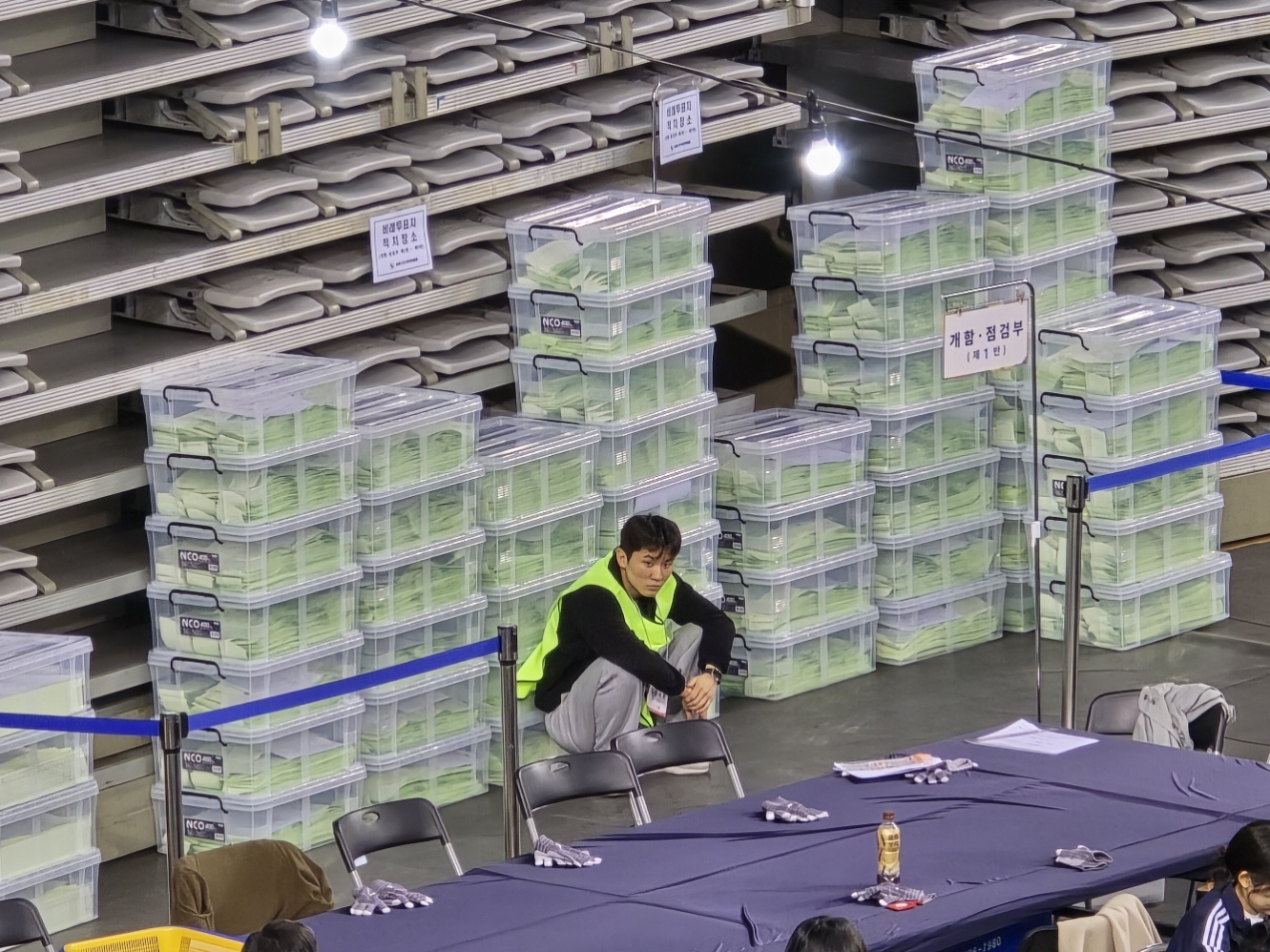

On 10 April 2024, voters in the Republic of Korea (RoK) went to the polls to elect 300 representatives to the 22nd National Assembly 1 (NA) for a four-year term . This election represented an implicit referendum on the incumbent People Power Party’s (PPP) president, Yoon Suk Yeol, in that it offered voters an opportunity to express a judgement on his mid-term performance, two years after he had taken office.
As the polls closed, the National Election Commission (NEC) announced that over 29 million of the total 44 million eligible voters had participated in the election – representing a total vote turnout of 67 per cent – a record high in Korea’s 32 years of parliamentary elections . Gender-disaggregated figures indicate that of the total turnout 42.6 per cent were female voters and 51.6 per cent male.
The 2024 NA election results confirmed that the DPK, with its two liberal “satellite” parties, had secured a significant parliamentary majority, with a total of 192 seats. This marks one of the largest majorities seen in recent decades 2 . The opposing PPP received a reduced presence in the National Assembly, now holding 108 seats compared to the 114 it previously held. This shift in parliamentary representation reflects a significant political change in the RoK.
How does the election of the RoK’s National assembly work?
To elect the 300 members of the National Assembly, t he RoK employs a mixed-member proportional representation (MMP) system that combines majoritarian and proportional formulas. The MMP was introduced in 2020 to provide, in principle, greater diversification within the unicameral parliament by increasing the chances of representation – through the proportional segment of the formula - for smaller political parties. Accordingly, 253 seats are filled through a First-Past-The-Post (FPTP) segment, in single-member constituencies, by a simple plurality of votes, whereas the remaining 47 seats are filled from closed party lists based on the proportion of votes obtained by political parties in the districts, provided that they have obtained at least 3 per cent of the total valid votes cast nationally or managed to secure five or more seats.
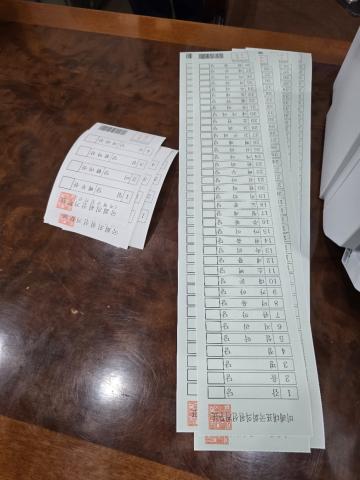
In practice, however, the MMP system has so far still favoured the representation of the two most prominent parties, partly because it is still heavily leaning towards the majoritarian formula – given that only a mere 15.67 per cent of the 300 seats are allocated through the proportional segment - and partly because both the DPK and PPP, in order to secure additional representation though the PR segment, resolved to establish so-called “satellite” parties as a tactical approach to enhance their legislative power and representation in the NA by taking advantage of the nuances of the MMP electoral system.
For the 2024 NA election, a total of 940 candidates competed for the 253 seats in the majoritarian segment of the MMP, while 38 smaller parties, including the satellite parties of DPK and PPP, for the remaining 47 seats awarded under the PR element. Notably, the unprecedently high number of political parties competing in the PR segment resulted in a longer ballot paper, of 51.7cm in length which could not be fed in the automatic ballot paper sorting machines typically used for counting and, thus, required the ballot papers case under the PR element to be counted manually for the first time in 30 years.
In terms of female representation 3 in the NA, the 2024 election saw a record of 36 women elected (out of a total of 97 female candidates running), marking an increase from the 2020 NA election which had recorded a total of 29 women elected.
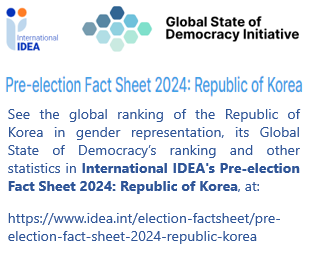
On 10 April 2024, the polls opened from 6 a.m. to 6 p.m. to over 44 million eligible voters to participate at 14,259 polling stations, managed by up to 139,000 polling officials, across the country. Following the revision of the Public Official Election Act in 2020, which lowered voting age from 19 to 18 years, many first-time voters were also eligible to participate.
Upon attending the assigned polling station, voters had to establish their eligibility by either placing their index finger on a fingerprint scanner or by scanning their National ID card. If eligible, they were handed two colour-coded ballot papers, one for each segment of the MMP electoral system, which – once in the voting compartment – they would make with an official red-ink rubber stamp and deposit in the ballot box, before leaving the premises .

At the close of the polls the sealed ballot boxes were transported, under police escort, from every polling station to the 254 counting centres established in every constituency across the RoK . Early voting ballot boxes stored at provincial and municipal NEC offices were also transported to the country centres.
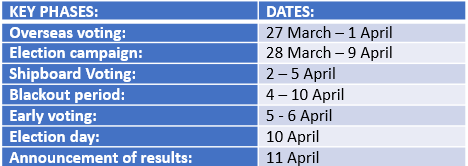
The sorting of marked ballot papers at the counting centres involves a combination of technology and human oversight which forms the backbone of the RoK’s ballot sorting and counting methodology and ensure transparency, accuracy, and integrity in the counting process and prevent any potential errors or fraud. Once the ballot boxes are unsealed and emptied, voted ballots are manually sorted according to the FPTP or PR race. Optical scanners (resembling cash sorter machines) sort the ballots into stacks based on how they are voted. After machines have sorted the ballots, a manual check is performed by election staff, scrutinised by election observers, before the ballots are placed into the counting machines which counted the stacks.
A highly inclusive and convenient voting process
The traditional use of multiple and diverse voting channels participating in RoK’s elections a highly inclusive and convenient voting process. In fact, the various voting channels available to voters are designed to efficiently respond to multiple enfranchisement barriers they may have to face every time a national election is called.
Aside from ordinary voting on election day at the assigned polling station, the RoK provides options for:
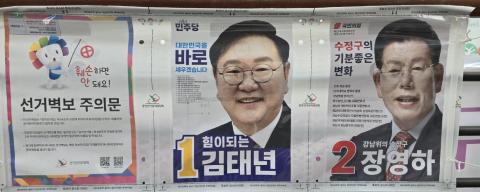
Dealing with novel and evolving threats to election integrity
While the integrity of the 2024 NA election was not exposed to significant threats, two novel threats characterised, albeit to a minor extent, its management:
A deeply polarised pre-election political environment and its aftermath
The political landscape in the RoK has traditionally been characterized by deep polarization, with politics being highly antagonistic and personality driven. One addition factor contributing to polarisation have been distinct voting patterns among demographics – particularly among different gender and age groups – which typically characterised past elections and were again present in the 2024 national polls.
Such deep polarisation reached its climax in the bitterly fought election campaign period that lasted for 14 days, from 28 March to 4 April. P articularly in the lead-up to its final phase , the election campaign was s ignificantly tainted by hostile discourse, slanderous attacks between rival parties, and harsh rhetoric. Policy and reform discussion was notably absent from the discourse.
Furthermore, the 2024 NA election was held amid the President Yoon’s decreasing approval rate 15 , following his struggle to achieve his agenda in a legislature dominated by the DPK, a cost-of-living crisis, a spate of political scandals, his administration its perceived mismanagement of economic issues and corruption allegations.
Elected to the presidency in 2022, Yoon Suk Yeol defeated the DPK’s candidate, Lee Jae- myung , by a mere 0.73 percent margin , the slimmest victory recorded in any presidential election. However, upon assuming his office, Yoon had inherited a DPK dominated assembly 16 , elected in 2020.
Hence, the outcome of the 2024 NA election came as a major political setback to President Yoon. With the DPK further consolidating its control of the NA, for his remaining three years in office Yoon will be the first president in decades to contend with an opposition-controlled parliament for his entire time in office. This will de facto further reduced his already limited ability to implement reform and policies requiring bipartisan legislative endorsement .
For the DPK and allied parties, despite the remarkable success at the 2024 NA elections, they fell short in obtaining the 200 seats that had been forecast by exit polls. A two-thirds majority in the National Assembly would have allowed them to override any presidential veto, rewrite the Constitution, or even impeach him 17 .
Key takeaways from the 2024 NA election
Looking at the 2024 NA election, two contradictory insights - one on the positive side, the other on the negative one - can be highlighted:
Firstly, the Republic of Korea’s politics continue to be persistently polarized, characterised by a deepening ideological divide between the major political parties and their supporters. Regrettably, this factor contributes to a political landscape where dialogue is increasingly challenging, policy and reform agendas fail to be pursued, and where social conflicts and the divide between opposing political ideologies continue to be amplified rather than resolved through mediation, compromise, and party politics.
Secondly, the limited yet smart and strategic harnessing of technology introduced by the NEC to enhance voting in the RoK, aiming for inclusivity, efficiency, and convenience for voters while upholding security, transparency, and reliability standards.
Notably, such application of technology is primarily focused on typically less contentious aspects of the voting procedure, such as voter eligibility verification, ballot printing and sorting, rather than on procedurally or politically sensitive areas like ballot marking or counting of the votes, which are more prone to scrutiny, controversy, and disputes. This strategic approach reflects a balanced deployment of technology to streamline certain aspects of the electoral process without compromising its integrity which can serve as an important lesson to be learned by electoral management bodies across the world, planning to adopt technology solutions for their elections.
Footnotes
1 The National Assembly is the unicameral national legislature of the Republic of Korea.
2 In the 2020 NA election, the DPK had won 163 seats, the highest number of seats won by any party since 1960 which, together with the 17 proportional representation seats secured by the DPK’s satellite party, the Platform Party, had given to them a total of 180 seats.
3 The introduction of a legal quota in the RoK has been followed by an increase in the number of female legislators elected to its unicameral parliament.
4 During the “ blackout” period the publication of opinion poll results is prohibited.
6 See: “YouTuber faces prosecution in Korea over suspected spy camera installation at polling stations”, The Korea Times, available at: https://www.koreatimes.co.kr/www/nation/2024/04/251_372149.html
7 Before Slovakia’s 2023 parliamentary election fake AI-generated audio recordings impersonated a liberal candidate discussing plans to rig the election.
8 A robocall impersonating President Biden advised New Hampshire voters not to vote in the state’s presidential primary election.
9 The 2024 Indonesian election saw a deepfake video “resurrecting” the late President Suharto.
10 The use of deepfake content, albeit not for malicious aim, is not entirely new to politics in the RoK. During the presidential election campaign in 2022, the two main candidates had employed AI-generated avatars of themselves to appeal the electorate.
11 Hefty sanctions (up to (U$37,000) have been introduced for anyone found to show or divulging political campaign videos created with deepfake.
12 See: “April 10 elections under threat from AI deepfake manipulation”, the Korea Tomes, available at: https://www.koreatimes.co.kr/www/nation/2024/04/113_369059.html
13 See: Australian Institute of International Affairs, “Voting Preferences in the 2024 South Korean Legislative Election”; available at: https://www.internationalaffairs.org.au/australianoutlook/voting-preferences-in-the-2024-south-korean-legislative-election/
14 This age group played a decisive role in influencing the razor-thin outcome of the 2022 presidential election.
15 Gallup Korea poll. President Yoon’s popularity recorded a 18 percentage point drop from 52 per cent in May 2022, when he first took office, to 34 per cent in March 2024
16 President Yoon often blamed the DPK-controlled Parliament for blocking or undermining his reform agenda, in particular the introduction of labour and health care policies.
17 The last two actions require confirmation via a referendum and the Constitutional Court, respectively.